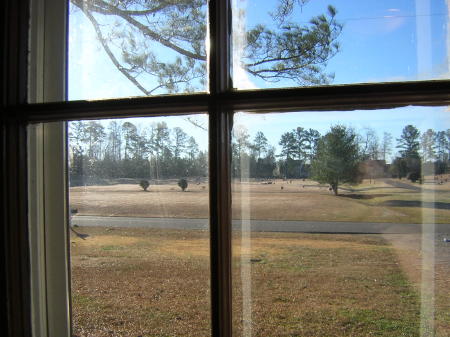New Old
by Peter O. Whiteley
|
In the added master bedroom and bathroom, the trough sink, horizontal boards for the walls, and interior glass door are recycled. For maximum energy efficiency, windows are double-glazed and argon gas-filled.
Geothermal The open plan maximizes spaciousness, helps reduce the amount of building material required, and allows radiant heating to warm the whole house. The wood for framing and walls was sustainably harvested. Air return The metal grid that extends part of the upper floor helps create a convective loop for air circulation. Hot air can escape through windows. Water and energy conservation 1. Trees and arbors with deciduous plants to screen south- and west-facing windows 2. Environmental Protection Agency (EPA)-certified wood-and pellet-burning fireplace or stove, or a direct-vent gas fireplace or stove 3. Ridge and eave vents |  |
5. Skylight tubes
6. Cisterns to catch rainwater
7. On-demand or high-efficiency water heater
8. High-efficiency forced-air heater and Energy Star-rated appliances
10. Low-flow toilets and showers
11. Landscape with permeable surfaces such as an open flagstone patio, decomposed granite or gravel paths, and drought-tolerant plantings
12. Climbing vines to shade exterior walls
13. Concrete or tile floors that act as passive solar-heat sinks
14. Photovoltaic array to provide solar power
15. Solar water heating
16. Operable skylights
17. Awnings to shade windows
Interior
18. Bedding with 100 percent cotton fiber and furniture that contains certified or recycled lumber with no- or low-VOC (volatile organic compound) finish
19. Carpeting woven from bamboo, hemp, jute, recycled plastic, sea grass, or wool
20. Wall finishes such as paint that contains low or no VOCs; plaster; recycled-glass tiles; or wallpaper made of natural, renewable, or recycled material
21. Flooring made of bamboo, concrete, cork, high-pressure laminate, linoleum, recycled or certified lumber, palm, or tile
22. Cabinetry molded from formaldehyde-free particleboard or wheatboard shells with bamboo or certified-lumber exterior
23. Countertops made of certified lumber, concrete, lightweight concrete with recycled glass, or Richlite (paper content)
Framing
24. Recycled timber
25. Manmade decking
26. Certified framing lumber
27. Oriented Strand Board (OSB) for roof, wall, and floor sheathing
28. Engineered micro-lam (laminated), paralam, or glu-lam beams, which take the place of full-dimension lumber
29. Nontoxic pressure-treated lumber
30. Engineered I-beam floor joists
31. Rigid insulation to prevent heat loss
32. Engineered, manufactured roof trusses
33. Concrete foundation that contains fly ash (a by-product of coal combustion)
Exterior surfaces
34. Roofing that is composed of asphalt shingles; cementitious, recycled-rubber, slate, or term-cotta tiles; standing-seam metal
35. Insulated fiberglass or metal doors
36. Windows and sliding glass doors with low-e, argon gas-filled glazing
37. Walls covered with or made from fiber-cement, vinyl, or metal siding; certified lumber; pneumatically impacted stabilized earth (PISE); or stucco
A few products and techniques
Smart choices
Cotton insulation. Made from scraps of salvaged denim, this batt offers thermal, acoustic, and fire-resistant benefits. It contains no formaldehyde. It's more expensive than fiberglass insulation.
Certified framing lumber. FSC (Forest Stewardship Council)-certified means that standard-dimension boards were sustainably harvested. Can cost the same as conventional lumber, but usually costs slightly more.
Bamboo. Lumber-saving, rapidly renewable products include tamboured panels of split bamboo for walls, interlocking flooring, and sheets of veneer. Smith & Fong Plyboo, San Francisco (www.plyboo.com or 650/872-1184)
Green exterior. Straw bales sprayed with a soil and cement mixture (PISE), fiber-cement siding, and double-glazed windows. DESIGN: Arkin Tilt Architects, Albany, CA (www.arkintilt.com or 510/528-9830)
Richlite counters. A solid-surface material made with paper and phenolic resin. Far cheaper than wood, it can be cut with standard woodworking tools. Rainier Richlite Co., Tacoma, WA (www.richlite.com or 888/383-5533)
Hydronic-heated floors. Warm water runs through continuous loops of polybutyl pipe buried in a thin coat of self-leveling concrete. Ideal for people with allergies and respiratory problems.
Natural-fiber floor coverings. Paper, plant fibers (such as coir, hemp, jute, sea grass, or sisal), and wool are alternatives to synthetic carpets. At environmental stores and www.naturalfloors.com
Insulated concrete forms. Interlocking modules replace wood forms and serve as insulation. Spacers suspend reinforcing bar and act as screw points. Arxx Building Products, Cobourg, Ontario (www.arxxbuild.com or 800/293-3210)
Clay-based paints. Natural clays (in a limited color range) are mixed with non-outgassing emulsions. BioShield Paint Co., Santa Fe (www.bioshieldpaint.com or 800/621-2591)


